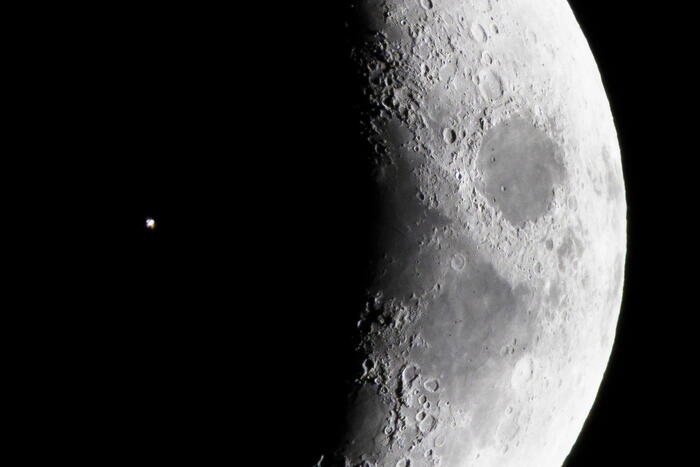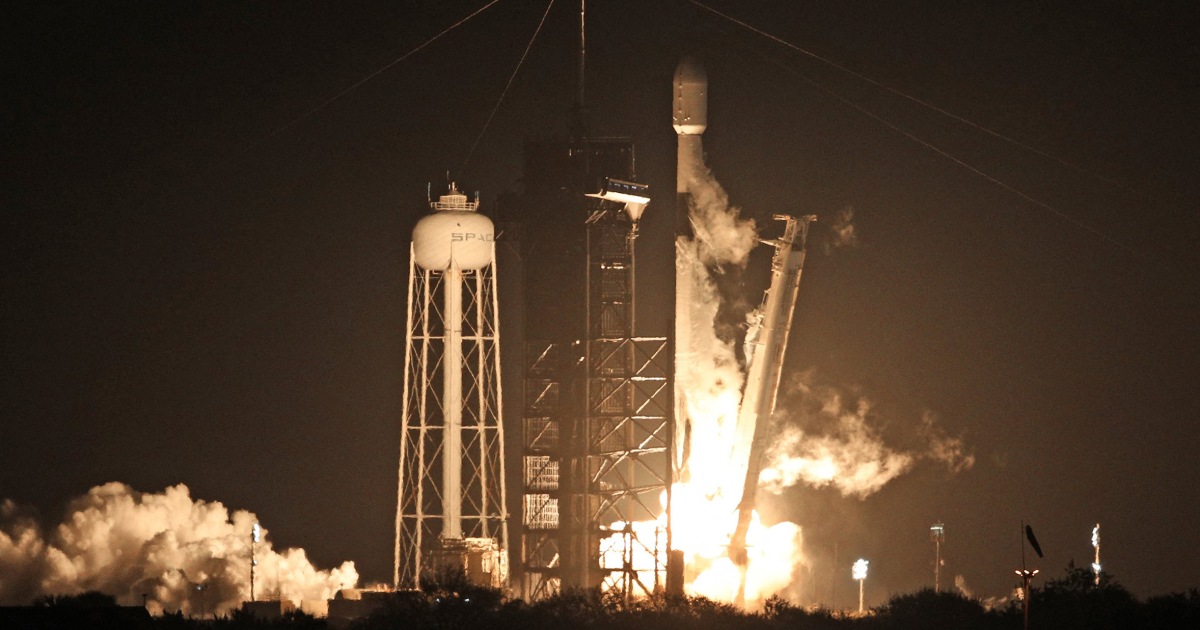Take-off scheduled for 3:24 p.m.
The miniature satellite called UVSQ-SAT is due to leave the US base at Cape Canaveral, Florida, on Friday, January 22, aboard SpaceX's Falcon 9 rocket.
A true technological feat, this small 10 cm square box weighs barely 1.6 kg.
It was imagined and designed at the Latmos laboratory at the University of Versailles-Saint-Quentin, in Guyancourt, to measure global warming more precisely.
"The satellite will be ejected from the rocket one hour after takeoff, it will activate automatically 15 minutes later and as soon as an amateur radio has detected its signal, we will know that it is alive," explains enthusiastic Mustapha Meftah, the astrophysicist at the head of the project.
At around 11 p.m., the UVSQ-SAT will fly over France and the Latmos researchers will be able to start collecting data using a specially installed antenna on the roof of the Observatory.
VIDEO. With SpaceX, NASA relaunches its space shuttle system
The machine takes a single measurement every 10 to 20 seconds.
But its small size and low orbit (about 550 km altitude) do not allow a global view of the Earth's surface.
It is only after 30 days that UVSQ-SAT will have provided enough information to obtain the flow map coveted by the researchers.
Newsletter The essential of 78
A tour of Yvelines and IDF news
Subscribe to the newsletterAll newsletters
Concretely, what will he observe?
"The sun sends rays to the surface of the Earth on which the clouds of the atmosphere influence, popularizes Chantal Claud, director of the University Observatory.
The Earth reflects its rays and emits others itself.
Some, when they leave, remain trapped in the atmosphere and are sent back to Earth: this is what creates the greenhouse effect. ”
By mapping all of these flows, astrophysicists will be able to observe natural energy imbalances and those that influence global warming.
These data can thus be used to evaluate the models that are developing.
"In climatic engineering, some want to inject aerosols to cool the atmosphere, but for me this effect is dangerous because it could modify parameters such as the acidity of the oceans", quotes Mustapha Meftah as an example.
50 miniature satellites in orbit by 2030?
One of the major goals is to get maps every 3 hours.
To do this, Mustapha Meftah plans to send around fifty miniature satellites into space by 2030, enough to constitute a constellation.
But before getting there, the Latmos research team still needs to develop deorbiting systems.
Indeed, a satellite at this altitude can remain in orbit for 15 to 20 years, like floating waste, before falling and disintegrating in the atmosphere.
The miniature UVSQ-SAT satellite is a technological feat weighing just 10 cm and only 1.6 kg./LP/Julie Ménard
"SpaceX will release more than 130 satellites the same day, it will be a fireworks display, announces the astrophysicist.
The previous record was held by India with 120 satellites.
A conquest of space which makes the miniaturization of these devices all the more necessary, not to mention the economic and practical advantages.
“Whereas previously it took several decades to bring projects to fruition, we are moving towards much shorter and less expensive assignments,” explains Chantal Claud.
It is with great pride to join this effort. ”














/cloudfront-eu-central-1.images.arcpublishing.com/prisa/EXJQILQR5QI7OMVRTERD7AEZAU.jpg)